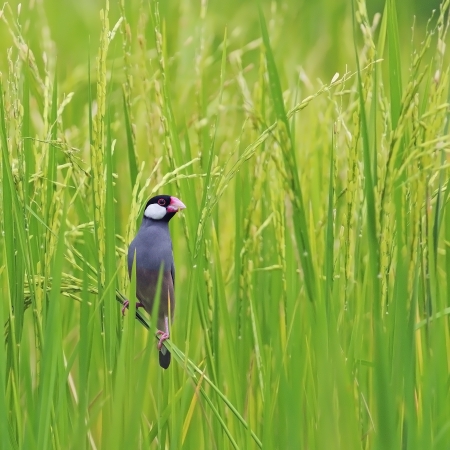Introduction to Birdwatching and Wildlife in India
India, with its tapestry of landscapes ranging from the towering Himalayas to the lush Western Ghats and the sun-baked Thar Desert, offers a treasure trove for birdwatchers and wildlife enthusiasts. The country’s unique geography creates diverse habitats—dense forests, riverine wetlands, grasslands, mangroves, and even urban parks—each brimming with life. Over 1,300 species of birds have been recorded here, including the majestic Indian peafowl, vibrant kingfishers, and migratory visitors like the Siberian crane. This incredible biodiversity is not only a testament to India’s natural heritage but also to the deep-rooted indigenous knowledge that has guided communities for centuries in coexisting with wildlife. From sacred groves preserved by tribal traditions to sustainable practices handed down through generations, India’s approach to nature is holistic and respectful. For campers keen on exploring these wonders, every trip into the great outdoors becomes an opportunity to witness this harmonious relationship firsthand—a journey into a paradise where ancient wisdom meets modern conservation.
Planning an Eco-Friendly Camp in Indian Wilderness
When setting out to explore the diverse birds and wildlife of India, thoughtful planning for an eco-friendly camping trip is essential. The Indian wilderness, from the Western Ghats to the Aravalli ranges, is rich in biodiversity and sacred landscapes that deserve our utmost respect. Here are practical tips for preparing a sustainable and minimal-impact adventure.
Choose Local & Biodegradable Products
Sourcing supplies locally not only supports Indian communities but also reduces your carbon footprint. Opt for biodegradable essentials such as bamboo cutlery, coconut shell bowls, and natural cleaning agents made from reetha or neem. Many Indian brands now offer eco-friendly alternatives suited to local conditions.
| Camping Need | Eco-Friendly Alternative | Indian Example |
|---|---|---|
| Utensils | Bamboo or stainless steel | Bamboo India cutlery sets |
| Cleaning supplies | Natural soaps | Khadi herbal soap bars |
| Water bottles | Copper or steel bottles | Milton copper water bottle |
| Food storage | Cloth wraps or tiffins | Dabbawala tiffin carriers |
Respect Sacred Spaces and Local Customs
The Indian outdoors often overlap with places of spiritual importance—sacred groves, rivers, or hills revered by indigenous communities. Always seek permission when entering these areas and avoid any activity that may disturb the environment or cultural practices. Keep noise levels low, dress modestly, and never take away stones, plants, or feathers as souvenirs.
Packing Minimal: What to Bring for Low Impact Camping
- Tent: Preferably made from natural fibers or recycled material.
- Reusable Cloth Bags: For collecting waste and carrying supplies.
- Solar Chargers: To minimize reliance on disposable batteries.
- Minimal Toiletries: Stick to basic herbal products (e.g., shikakai powder) that do not pollute water sources.
- Traditional Clothing: Lightweight cotton kurta-pyjamas or dhotis are comfortable and suitable for various climates.
Pro Tip: Follow “Leave No Trace” Principles, Indian Style!
Before leaving your campsite, do a thorough sweep for litter—yours and any you find from previous visitors. Dispose of waste responsibly at designated points or carry it back if necessary. By practicing mindful camping rooted in local customs and eco-consciousness, you help preserve Indias wild beauty for generations to come.

3. Spotlight on Iconic Indian Birds and Animals
India’s diverse habitats are home to some of the world’s most extraordinary wildlife, making camping a truly immersive experience for nature lovers. While exploring the great outdoors, you are likely to encounter several iconic species that represent the vibrant biodiversity of this land.
Indian Peafowl: The National Pride
The Indian Peafowl, locally known as ‘Mor’, is not just India’s national bird but also a frequent sight near forest edges and water sources. Its vibrant blue-green plumage and impressive courtship display are a delight to observe—just remember to maintain a respectful distance, especially during the breeding season.
Sarus Crane: Graceful Wetland Resident
The majestic Sarus Crane (‘Sarus’ in Hindi), with its towering height and striking red head, can be found wading through wetlands across North India. These gentle giants mate for life and are best watched from afar with binoculars, ensuring they aren’t startled or disturbed.
Hanuman Langur: Playful Forest Companions
Named after the revered monkey god Hanuman, these social primates are common in many Indian forests and temple towns. Watch their acrobatics from a safe distance and avoid feeding them, as human food can harm their health and alter their natural behaviors.
Other Noteworthy Species
Keep an eye out for other fascinating creatures such as the Spotted Deer (Chital), Kingfishers, Jungle Fowl, and the Malabar Giant Squirrel. Each plays a unique role in the ecosystem and enriches your camping experience with their presence.
Best Practices for Responsible Wildlife Observation
When observing wildlife, always prioritize their well-being over photography or curiosity. Move quietly, avoid sudden movements, and use eco-friendly gear like binoculars or silent cameras. Stay on marked trails to minimize disturbance and never attempt to touch or feed wild animals. By respecting these guidelines, you help preserve the delicate balance of India’s natural heritage while enjoying its wonders up close.
4. Local Experiences: Connecting with Nature Guides and Forest Communities
When camping in the diverse landscapes of India, one of the most enriching experiences is engaging with local forest guides and adivasi communities. These stewards of the land have generations of wisdom about birds, wildlife, and the rhythms of nature. By connecting with them, campers not only gain authentic knowledge but also support sustainable tourism that respects local traditions and ecosystems.
Why Choose Local Guides?
Local guides, often belonging to indigenous or forest-dwelling communities, offer insights into animal behavior, bird calls, and tracking methods that are rarely found in guidebooks. Their deep connection to the environment ensures that wildlife exploration is conducted ethically and with minimal disturbance.
| Aspect | Benefits for Campers |
|---|---|
| Cultural Knowledge | Understanding folk tales and traditional uses of plants |
| Wildlife Tracking | Spotting rare species using silent tracking techniques |
| Sustainable Practices | Learning eco-friendly ways to camp and explore |
Responsible Wildlife Tracking
Respecting the delicate balance of nature is central to Indian wildlife experiences. Local guides teach how to observe birds such as the Indian roller or Malabar trogon without causing stress or alarm. They share signs of animal presence—like pugmarks or calls—helping campers appreciate every encounter without intrusion.
Collaborating with Adivasi Communities
Adivasi communities across India, from the forests of Chhattisgarh to the Western Ghats, welcome responsible travelers eager to learn. Participating in guided walks or storytelling sessions supports their livelihoods and ensures that age-old conservation knowledge continues to thrive. Choosing homestays or community-led campsites further deepens your connection with the landscape while minimizing environmental impact.
5. Mindful Practices for Nature Enthusiasts
Embracing mindful practices while camping in Indias vibrant outdoors not only deepens your connection with nature but also honors age-old Indian traditions. Begin your day with the simple ritual of early-morning birdwatching. As the sun rises, find a quiet spot under a peepal or banyan tree and observe the flurry of activity among local birds like the Indian robin or the melodious koel. This peaceful practice, rooted in patience and observation, is both calming and enriching.
Mindful Silence and Stillness
Silence is revered in Indian philosophy as a path to deeper awareness. While on trails or waiting near water bodies, practice mindful silence—no phones, no loud conversations—just quiet presence. Notice the calls of parakeets overhead, the gentle rustle of leaves, and the distant splash of a kingfisher diving for fish. This attentive stillness not only enhances your wildlife experience but also respects the natural rhythms around you.
Respect for All Living Beings
Indian ethos encourages ahimsa (non-violence) and compassion toward all creatures. Whether you encounter a curious langur monkey or an ant trail crossing your path, show respect by observing from a distance and avoiding any disturbance. Carry reusable containers to reduce waste, avoid feeding wildlife, and tread lightly on trails to preserve delicate habitats.
Simple Acts with Lasting Impact
Incorporate small gestures that reflect gratitude for nature: collect litter along your route, share stories about local flora and fauna with fellow campers, and use eco-friendly products whenever possible. These mindful practices not only safeguard India’s unique biodiversity but also nurture a deeper appreciation for the interconnected web of life that sustains us all.
6. Leaving No Trace: Responsible Camping in Indian Forests
Minimising Impact on Nature
Camping in India’s rich forests is a privilege, but it comes with the responsibility to protect these fragile ecosystems. Following the principle of “leave no trace” ensures that our presence does not disturb the diverse wildlife or spoil the pristine environment for future visitors.
Actionable Tips for Waste Management
Always carry reusable containers and bags to reduce single-use plastic. Segregate waste at your campsite into biodegradable and non-biodegradable categories. Dispose of all rubbish in designated bins, or take it back with you if facilities are unavailable. Never leave food scraps behind, as they can attract animals and disrupt their natural habits.
Fire Safety in the Wild
Open fires are often restricted in many Indian reserves due to wildfire risks—always check local forest department regulations before lighting any fire. Use portable stoves instead of campfires whenever possible. If a fire is permitted, keep it small, contained, and under constant supervision. Extinguish completely with water before leaving the site.
Ethical Behaviour as a Guest
Respect local customs and traditions—remember that many forests are home to indigenous communities and sacred sites. Speak softly to avoid disturbing birds and animals. Stick to marked trails to prevent trampling on delicate plants or nesting grounds. Do not pick flowers, remove stones, or collect feathers as souvenirs.
Cultural Sensitivities and Local Regulations
Before your trip, familiarise yourself with the rules set by the Forest Department or local authorities for each region—regulations may vary between national parks, tiger reserves, and community forests. In some areas, guides are mandatory to ensure both visitor safety and ecological protection. Show respect for local beliefs regarding sacred groves or protected species; always seek permission before entering restricted zones.
By treading lightly and being conscious guests in India’s wild spaces, we help preserve their beauty and biodiversity for generations to come.

